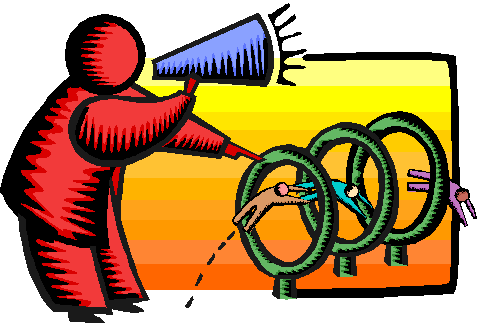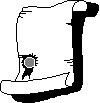| Patent
Points
|
|
| 2 | 95% Success Rate |
| 3 | 18-Month Publication |
| 4 | Rates Set for 2001 |
 |
|
How to write and claim a patent that wins in court was the topic of a 3-day class I attended last October. The instructors included appellate attorneys who argue patent cases at the appeals and Supreme Courts. The instructors analyzed many court decisions, showing us how the patent owner lost and what we can do to avoid making the same mistakes.
Many court decisions do not make sense. They do not agree with what most attorneys believe is the correct understanding of the patent laws. The traditional approach to legal analysis is to basically ignore these troubling cases (explain them away by highlighting some trivial difference) and practice according to the "good law" precedents that make sense.
Unfortunately, the patentee can still lose when only the rational precedents are followed. The class instructors therefore have developed a new approach called "Low-Profile, Common-Denominator" practice, or LP-CD.
Common-denominator means that all court decisions, even the bad ones, are taken into account. Patent practice decisions are made so that the patentee will win even if "bad law" prevails. The patent must satisfy both the good-law precedents and the bad-law precedents so that the patentee can win either way. It’s like designing a circuit for worst-case conditions, rather than just for typical conditions.
Often this means a "low-profile" approach - not being overly aggressive, sticking your head out too far. Avoiding disputed areas of patent law such as the Doctrine of Equivalents by writing good claims to begin with that will be literally infringed. Writing many claims rather than just one or two. Not writing overly-broad claims that are sure to be rejected by the patent examiner, creating estoppels later in court.
All too often, little effort is put up-front in writing the patent application, while much time is spent arguing the case during prosecution with the examiner. In contrast, a goal of LP-CD practice is ZERO prosecution - a first-action allowance. This way the patent attorney does not have to say anything during prosecution that later might be used against him. It deprives the infringer of ammunition to use at trial.
The costs are shifted from back-end prosecution to up-front patent drafting. When writing the patent, all possible variations and alternatives should be included. Some "bad-law" courts limit the patent to the specific variations included in the patent, preventing the patent from covering other alternatives, even well-known variations not specifically mentioned in the patent text. A wide range of claims - from broad to narrow - should be included, as long as they are not likely to be rejected as too broad.
Prior-art searches are critical. Never write a patent without knowing the prior-art patents. Knowing the technology allows the patent writer to draft claims to precisely cover variations of the new idea, without being rejected by the prior art.
Many cases had been lost by using "patent profanity" - words such as "essential", "critical", "necessary". Bad-law courts pick out something described in the patent as being essential, and add it to the claims, even when it is not really necessary. One instructor showed us a patent written by a "Patent Sailor" - it had so much patent profanity in it, that anyone could get around the patent.
Happily, I have been using many of the LP-CD techniques for several years already. We do a search first. We write many claims of different types- apparatus, method, means+function, computer-program-product. We try to include many alternatives in the description. We avoid patent profanity.
Some LP-CD techniques are more controversial. The instructors recommend not discussing the prior art at all. Advantages of the invention should not be mentioned. Don’t "sell" the invention in the text.
However, these techniques reduce the likelihood of allowance, since discussing the prior art and advantages helps to convince the examiner that we have a good idea.
One key goal of LP-CD practice is to avoid arguing the patentability of any claim during prosecution. Anything we say "can and will be used against us" by an infringer in court.
When the first letter from the Examiner is an allowance (a first-action-allowance), there is no prosecution, since the examiner allowed all claims without any disagreement. There is nothing for us to argue, no chance for us to put our foot in our mouth.
How are we doing towards the goal of Zero prosecution ? First-action allowances account for 40 % of my patents issued in the last few years. Another 28% have some claims allowed on the first office action. Usually only minor edits are needed before the patent issues, minimizing prosecution. Thus two-thirds of my patents have little or no prosecution.

Overall, more than 95% of the patents I have written have been allowed. Only 6 out of about 150 examined applications have been completely rejected or abandoned. Three patents required a continuation before being allowed, and another 5 were divided into 2 separate patents allowed by the examiners.
You can view the 100+ issued patents I’ve written at my website:
http://members.aol.com/stuapatent
Note that there is no www in the address. Many articles are posted on my site, including a successful appeal I prosecuted along with the decision by the patent appeal board.
Patent eFiling
We are now electronically filing patent applications over the Internet. Training videos were sent to all patent attorneys and agents to explain how to use the new XML-authoring and secure-filing software, named PASAT and ePAVE.
We have already electronically filed 5 patents. While the software has some quirks and bugs, it is quite usable. The patent office immediately sends us an electronic filing receipt with the serial number once the files are received. Patents can be filed 24/7, rather than only when the post office is open.
The patent is sent as an XML document that can be viewed with an advanced browser such as Internet Explorer 5.5 or higher. The drawings are attached to the end of the XML file using the TIFF graphics format, and a special TIFF viewer plugin must be installed, such as AlternaTIFF 3.5. The PTO’s XML style sheet (specif.XSL) is also needed to view the XML file.
Patent applications will now be published one and a half years after the filing date. For many years the European and Japanese patent offices have published their applications after 18 months. However, U.S. applications were kept secret until the patent issued, typically 2-3 years after filing. Applicants can request no publication if they do not file outside the U.S. Please let me know if you do not want publication.
A new law allows a patentee to collect from infringers reasonable royalties from the early publication date until the patent issues. Without 18-month publication such royalty damages could only be collected from the patent issue date.

Maintenance Fees
After a patent issues, the patent owner must pay maintenance fees to the Patent office every 4 years. The patent becomes expired if the fees are not paid on time. The fees are due 3.5, 7.5, and 11.5 years after the issue date.
For a small company, the fees currently are $425 at 3.5 years, $975 at 7.5 years, and $1,495 at 11.5 years. The patent office does not allow the fees to be pre-paid. The fees can be paid at the PTO’s website using a credit card.
Many PTO Rule Changes
Small entity forms have been eliminated in a sweeping set of changes to the patent rules that took effect in November. Although many rules and procedures have been streamlined, amendments to patents now require that a clean copy be submitted along with another copy of highlighted changes.
My hourly rate for 2001 will be $180 per hour, billed in quarter-hour increments. Fixed-price quotes are available for patent applications to facilitate budgeting and avoid expensive surprises.
Prosecution work such as amendments and other paperwork is billed at the hourly rate. Litigation-support work is normally billed at a higher rate. Patent searches are billed at a flat $400 for U.S. abstract searches. Patent copy expenses are then added on, typically another $50 to $90.
